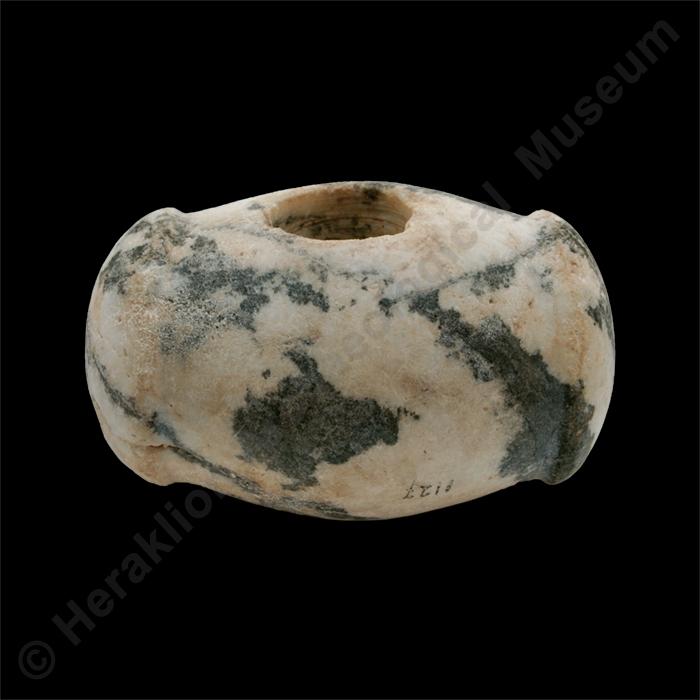Marble ritual mace
Λ1127
Stone (Veined Marble)
Intact
Length: 10.5 cm.
Pseira
Settlement
Late Bronze Age. Neopalatial period, Late Minoan I period.:
1600 - 1450 BC:
Gallery:
VIICase:
73Exhibition thematic unit:
Late Bronze Age - Neopalatial period (1700-1450 BC). Minoan religion - Domestic and open-air cultDomestic Shrines. Cult Vessels
Description
Mace of bluish-white marble. It has a spindle-shaped body terminating in two curved impact surfaces divided from the main body by grooves. In the centre of the body is a round hole for the shaft. Bronze hammers were used as tools in Minoan times, but stone maces do not appear to have been intended for use. Three stone maces were found stored together with a multitude of ritual objects in the Treasury of the Shrine of the palace of Zakros, while a further two were discovered in the corresponding Temple Repositories of the palace of Knossos. Moreover, some sealstones bear images of priestly figures holding maces or hammer-axes. It is clear, therefore, that the Minoans considered the mace a ceremonial emblem. It may have indicated the status of the figure carrying it, similarly to its use in the neighbouring cultures of Syria and Egypt.Bibliography:
Manti-Platonos Μ. "Τελετουργικές Σφύρες και Ρόπαλα στο Μινωικό Κόσμο." Αρχαιολογική Εφημερίς (1981): 74-83. Marinatos, N. Minoan Religion. Ritual, Image, and Symbol. Columbia, SC. 1993, 7, 128-129. Seager, R.B. Excavations on the island of Pseira, Crete. The University of Pennsylvania Museum Anthropological Publications 3.1. Philadelphia, 1910, 36.Author:
E. S.Photographs' metadata
